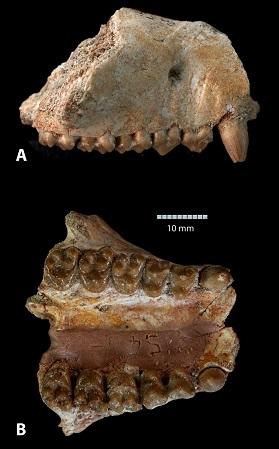Using AI to control energy for indoor agriculture
30 September 2024
Published online 20 March 2014

The discovery of two skull fossils in Morocco's Ouled Abdoun Basin may contribute to piecing together the story of mammalian evolution in Africa and Arabia.
Researchers from Centre Minier de Khouribga, Morocco, and Muséum National d'Histoire Naturelle, France, unearthed two near-complete skull fossils and a lower jaw of ancient mammals that could offer vital clues to the evolution of placental mammals in Africa and Arabia.
"The fossils show that Africa [was a key site] for the initial diversification of modern placental mammals," says Emmanuel Gheerbrant, of the Muséum National d'Histoire Naturelle, who led the study published in a recent issue of PLOS ONE.
"They belong to an ancient mammal known as Ocepeia daouiensis that roamed Morocco about 60 million years ago." The new fossils provide evidence of first and basal diversification of placental mammals in Africa, shedding light on what happened before the diversification of modern-day placental mammals, says Gheerbrant.
"These new fossils from the African continent are extremely significant for understanding mammalian evolution," says Maureen O'Leary from the Department of Anatomical Sciences of Stony Brook University, New York. To better interpret the recently discovered fossils, they need analysis in the context of previously published findings that integrate anatomy, behaviour, and molecular data for living and fossil species.
Gheerbrant and his colleagues used computed tomography (CT) scans of the fossilized skulls and lower jaw to construct three-dimensional models. Most of the cranium was preserved in one of the near-intact skulls which showed unworn teeth with some still erupting. In addition, the sutures in the skull are strongly fused, suggesting the skull belonged to a young female adult.
The other skull preserved the permanent cheek teeth with a large incisor and a large canine, suggesting it belonged to a young adult male. The most striking feature of the skulls is the shortness of face proportionately to the long cranial region. The skull roof profile is straight, with a high nasal and muzzle. The cheek tooth series appears relatively large with respect to the palatal area, emphasizing the prominence of the dentition in Ocepeia daouiensis. This indicates they had large teeth and thrived as herbivores.
"The fossil analysis demonstrates that this is the first ancient African mammal that bears anatomical features of ungulate-like mammals, such as elephants, and insectivore-like mammals, such as elephant shrews," says Gheerbrant. However, he says that Ocepeia daouiensis is more closely related to the common ancestors of modern-day placental mammals such as elephants, sea cows and manatees.
At the beginning of the Tertiary period, Africa was floating as a continental island isolated from the two supercontinents Laurasia and Gondwana, making it a unique niche for mammals such as Ocepeia daouiensis to evolve and diversify into modern-day mammals, Gheerbrant explains.
doi:10.1038/nmiddleeast.2014.72
Stay connected: